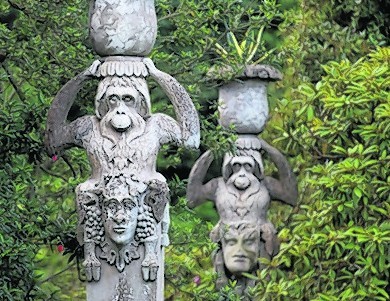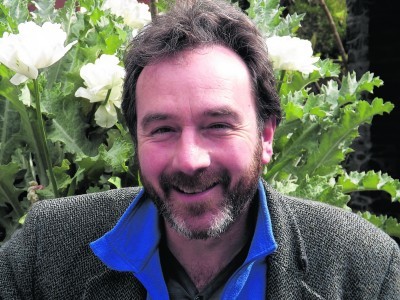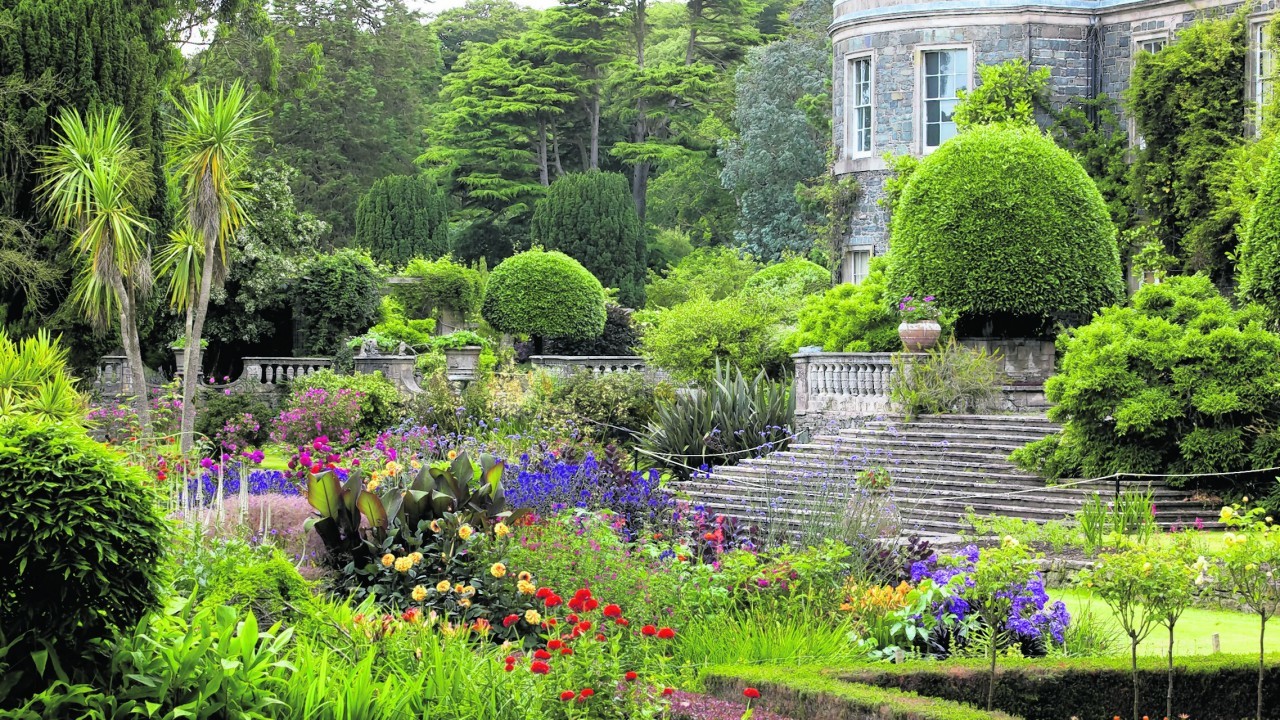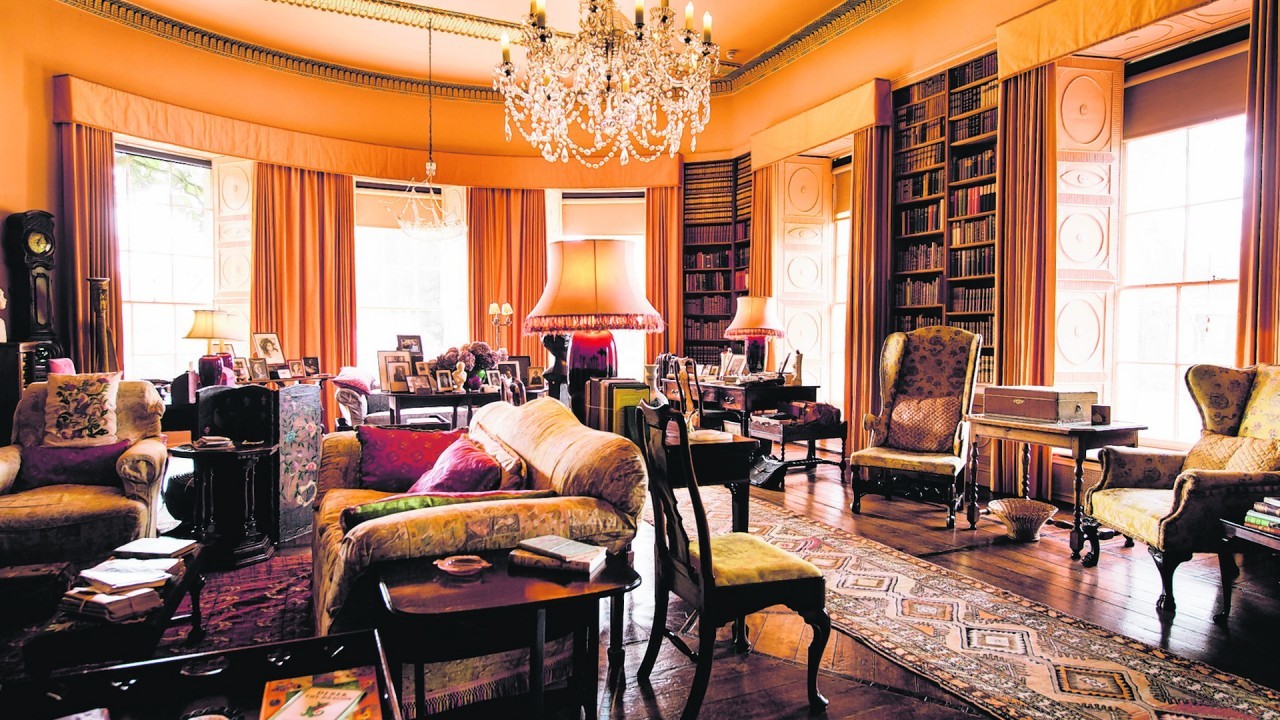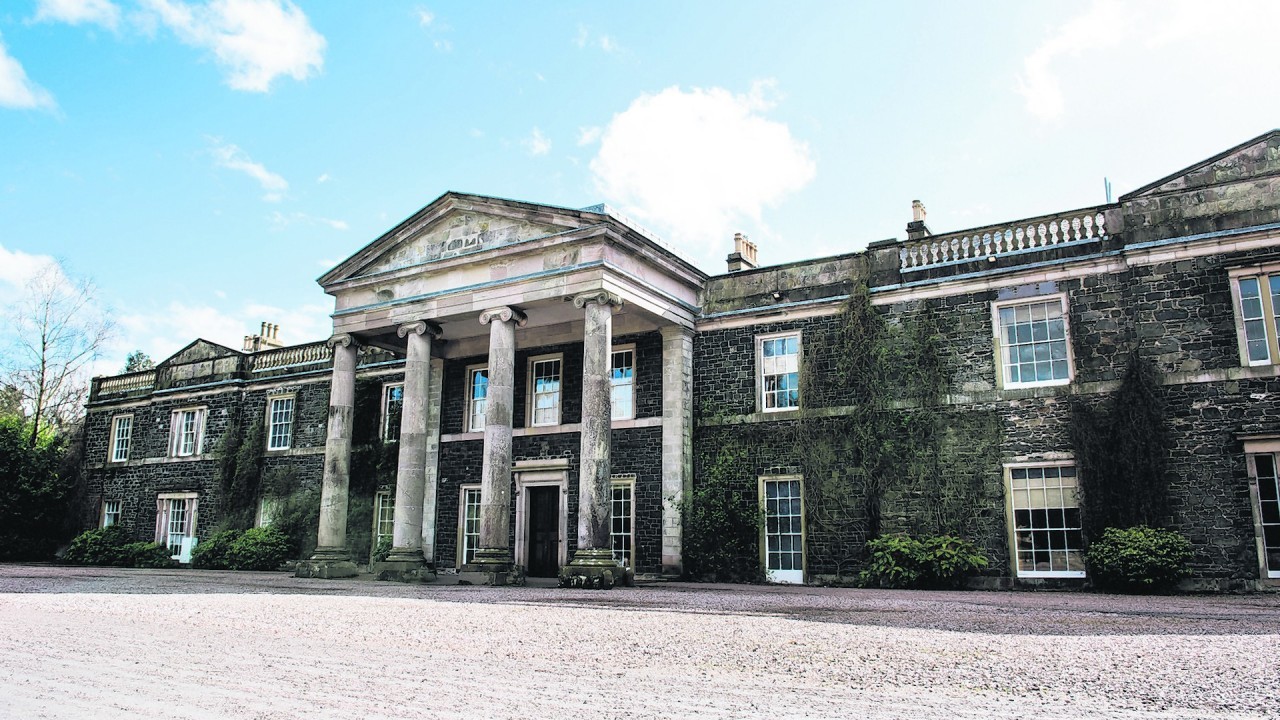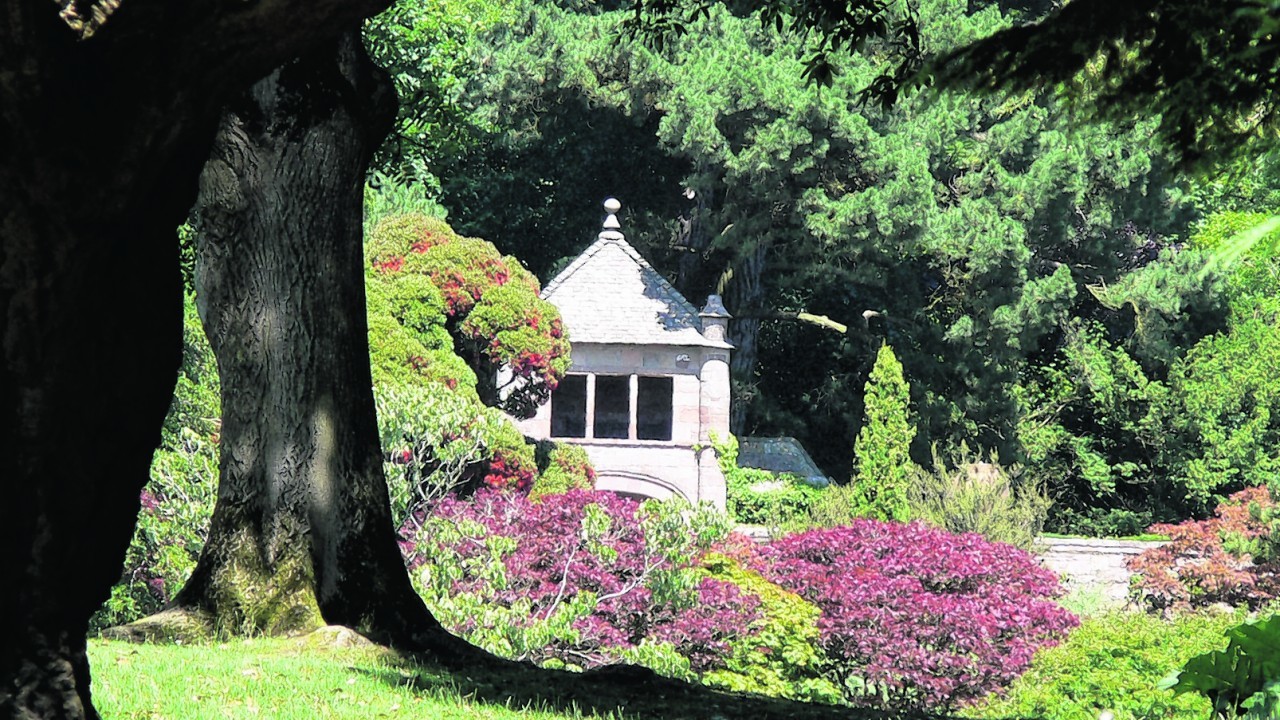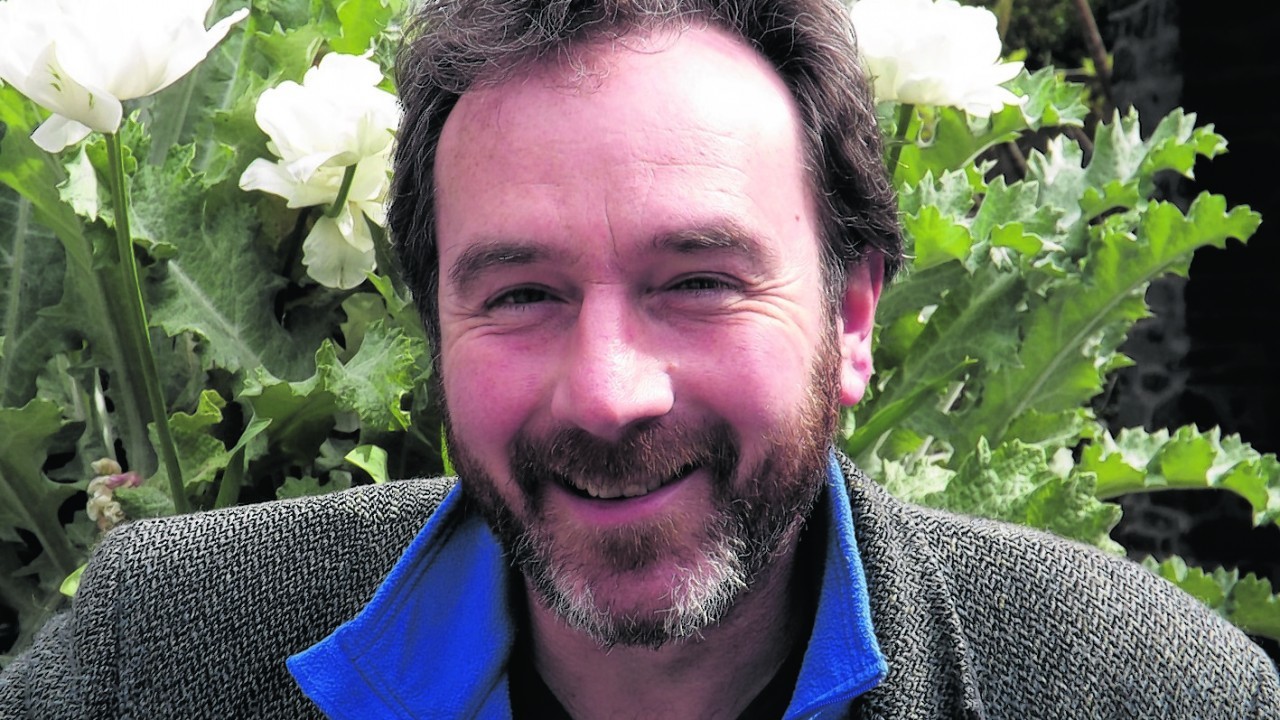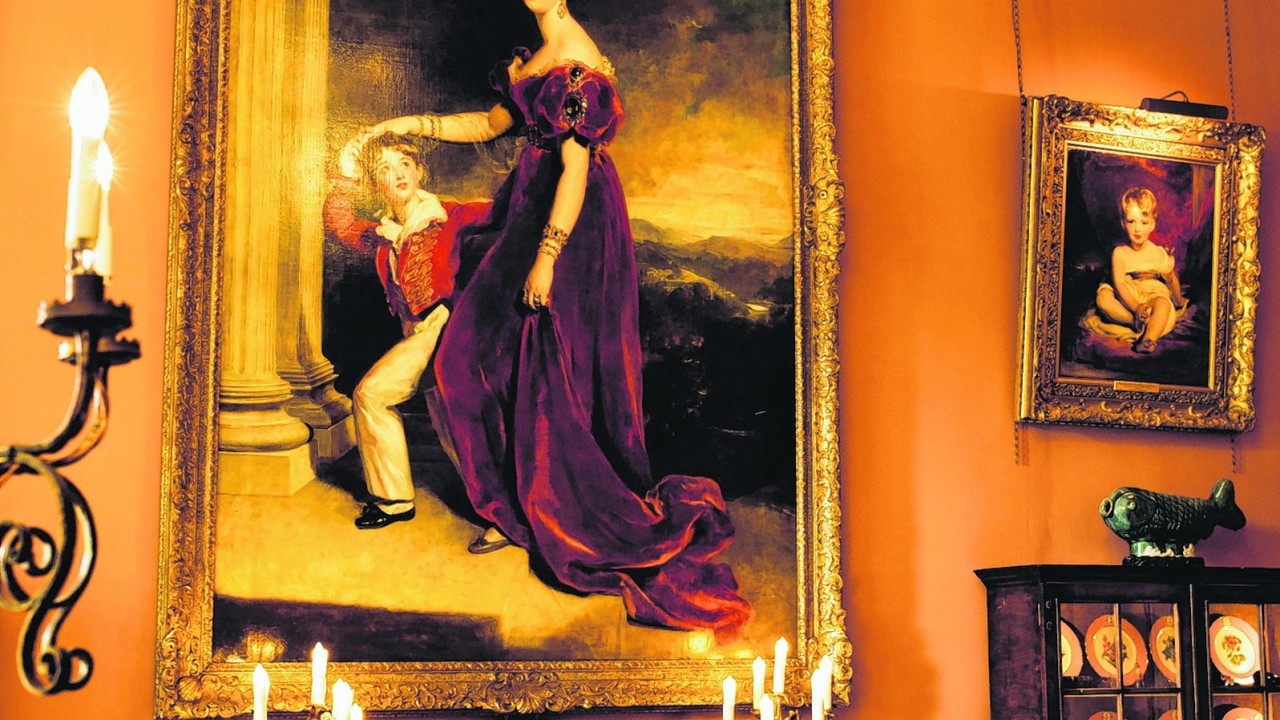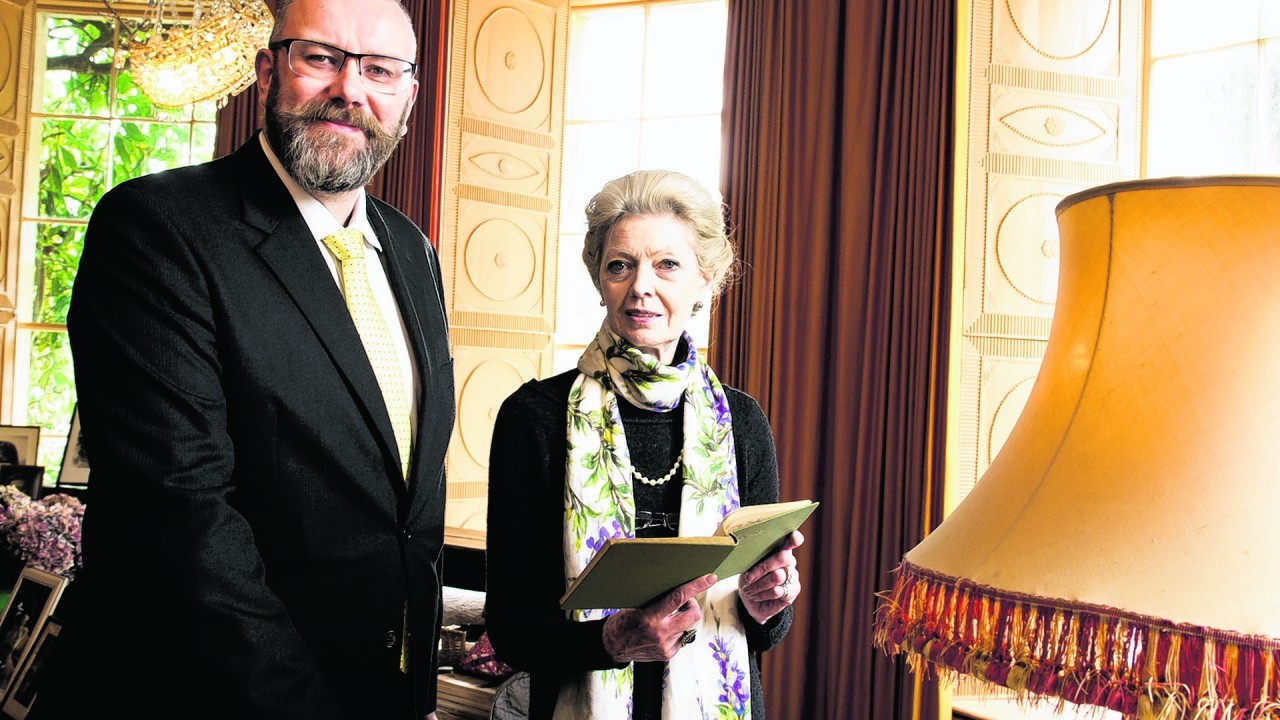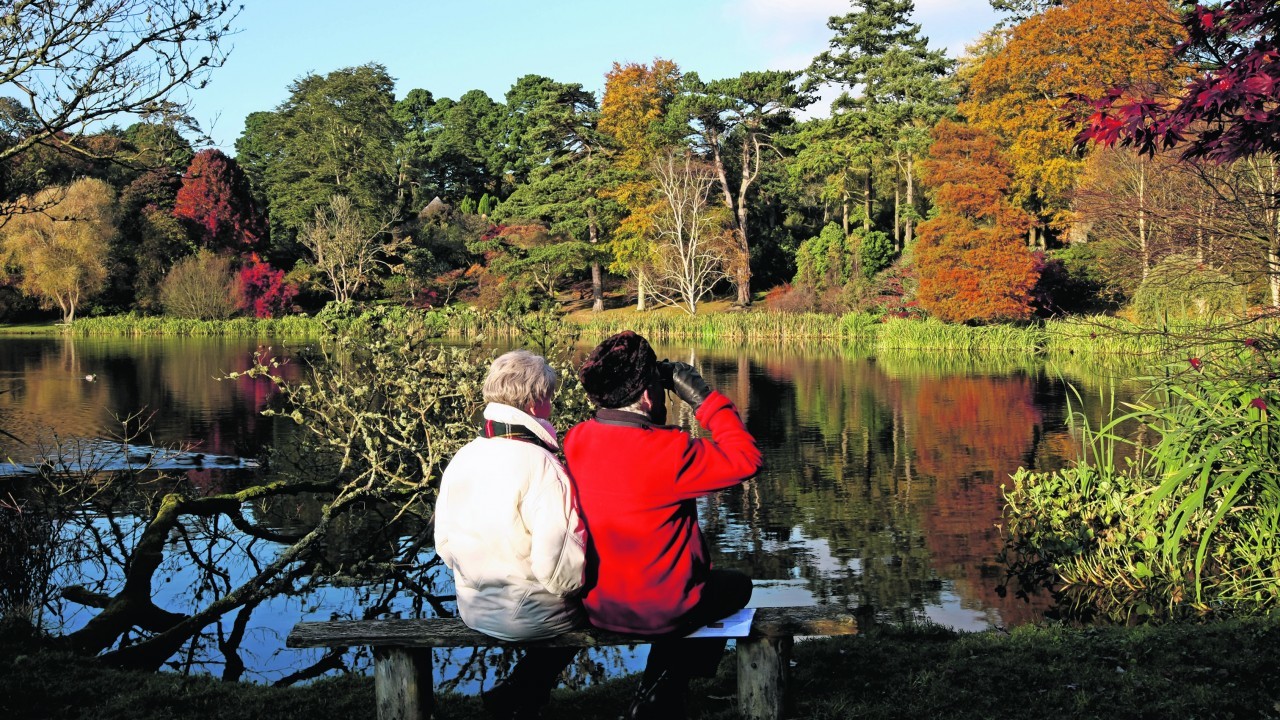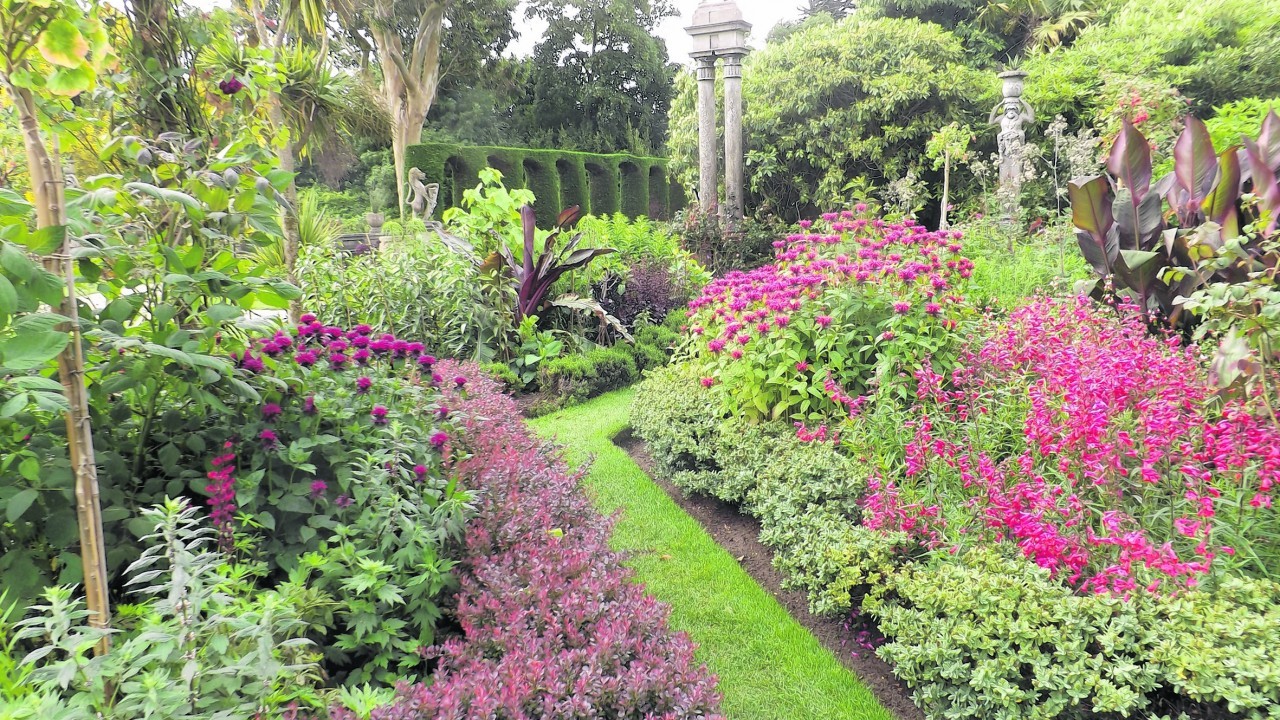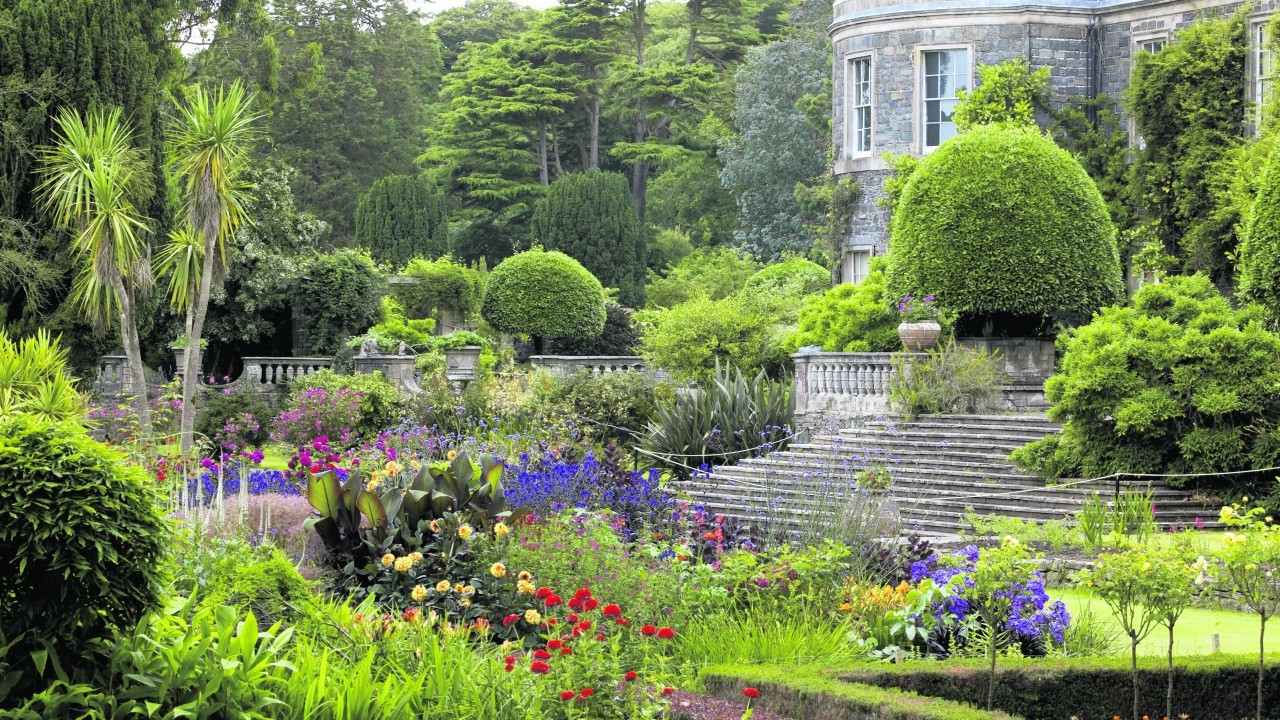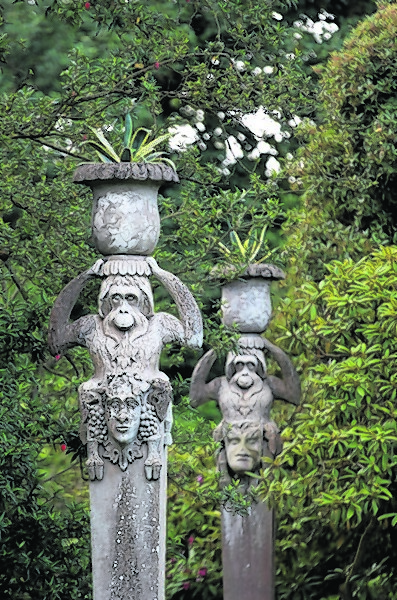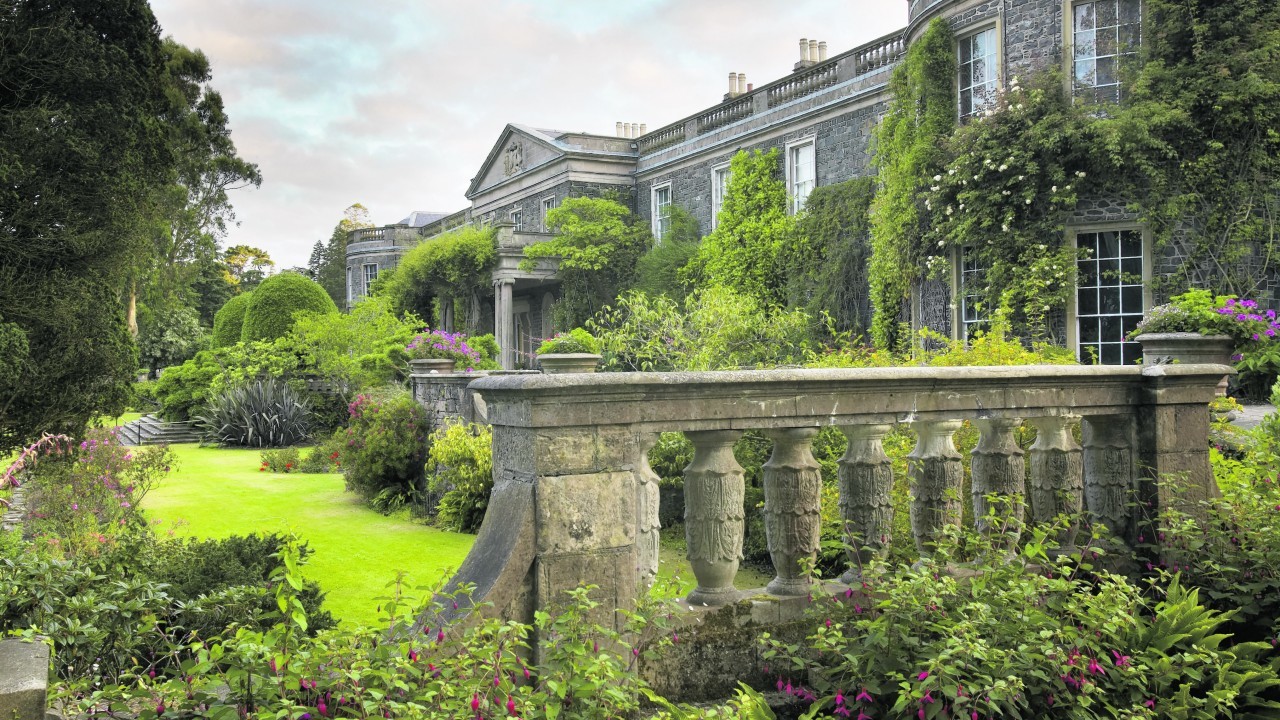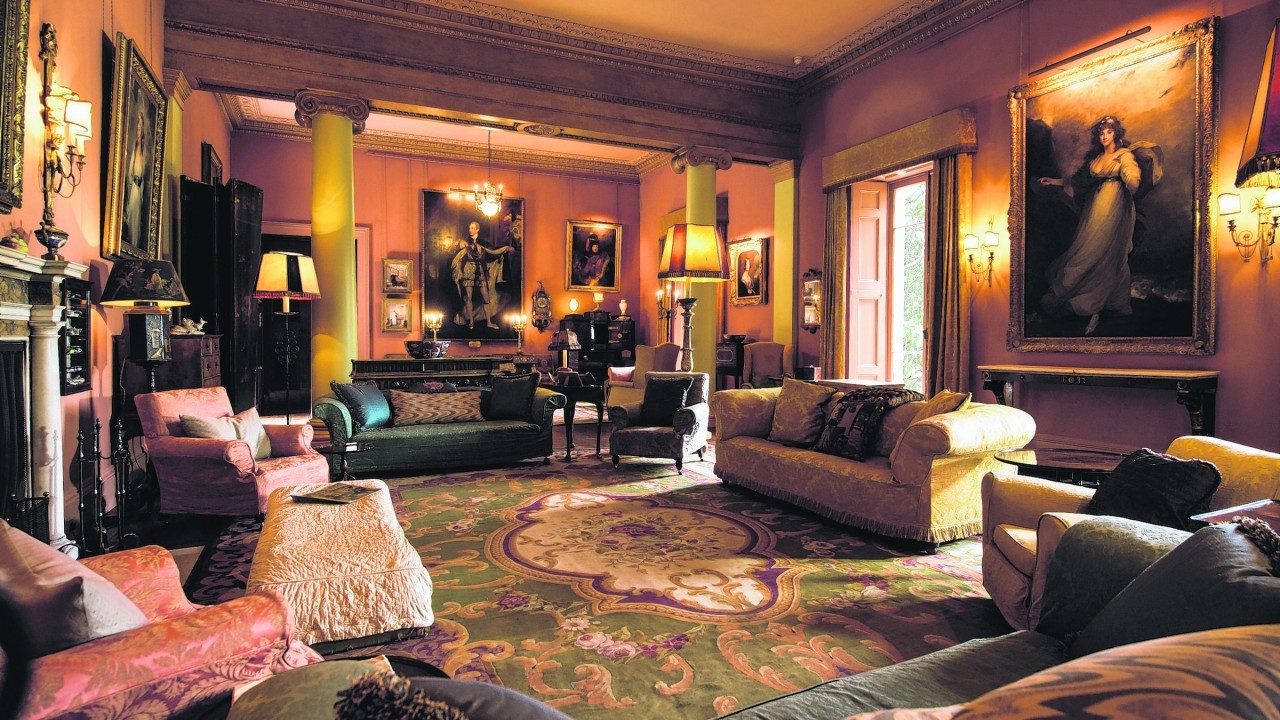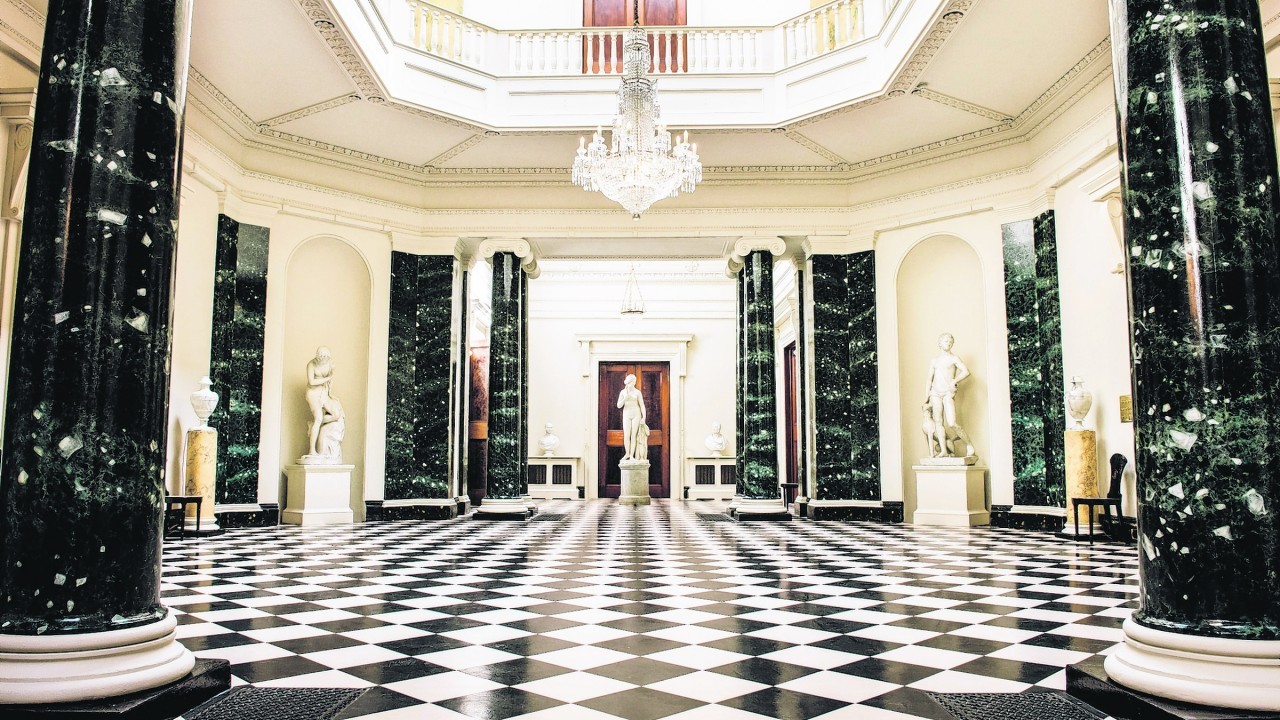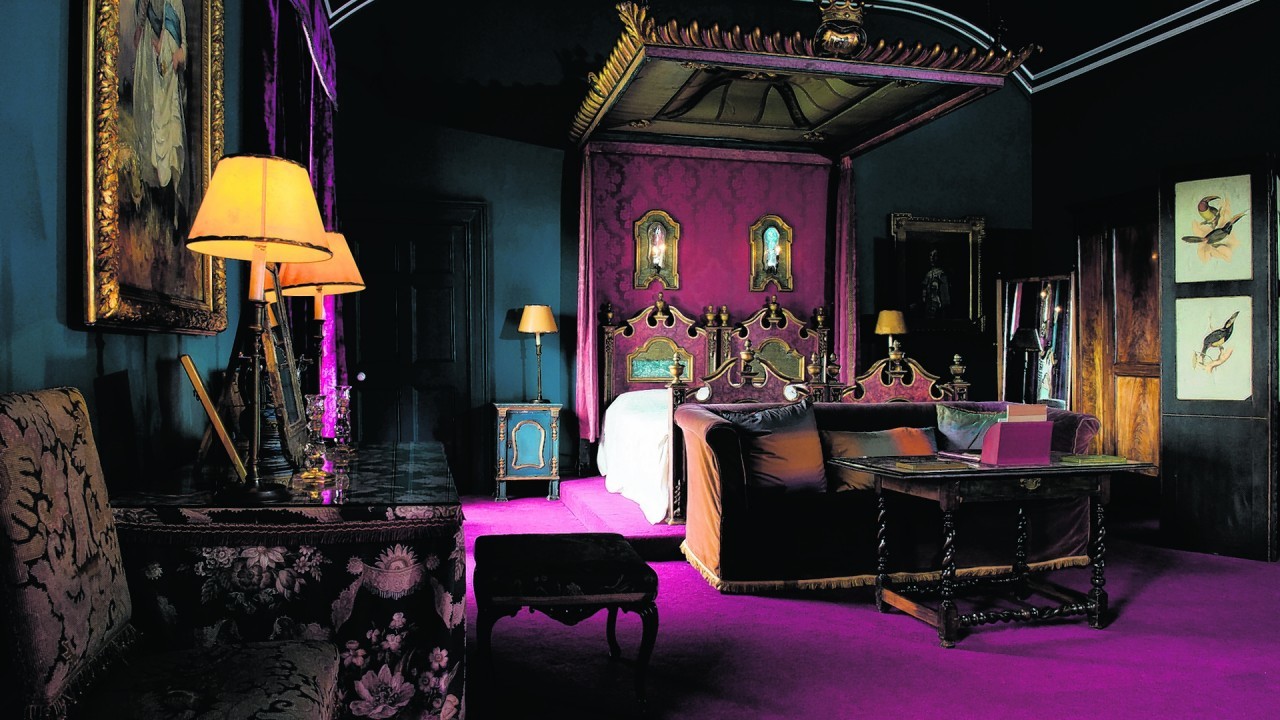Only a short flight away from Aberdeen, one of the top 10 gardens in the world boasts a truly Scottish connection…
Fancy wandering round a family home that’s just had an £8million makeover?
The National Trust has returned Mount Stewart House and Gardens in Northern Ireland to its former glory and guests can now enjoy this stunning house with previously unopened rooms, including the butler’s silver store and billiard room.
But for those who want to be transported to a place of mythology and fun, what’s outside the house might tickle your tastebuds even more. The stunning, reinvigorated garden – ranked one of the top 10 in the world – has been carefully replanted to reflect the formal gardens designed by Edith, Lady Londonderry, who created them.
Most rich garden owners would have employed a well-known architect, but Edith wanted to do everything herself, which is why this is a feminine garden, richly imaginative and intensely personal.
Packed with whimsical sculptures and containing many rare plants that thrive in the mild climate of the Ards Peninsula, the garden is divided into two; The Formal Gardens, comprising some 10 acres around the house and a 60-acre Pleasure Ground, mainly woodland garden, wrapped around a picturesque four-acre lake.
In parts of the Formal Garden, Edith used a rich allegorical theme; that of herself as Circe the Sorceress, the seductive witch Goddess who ensnared half of Odysseus’s crew.
Edith considered herself a Scot, and continuing this Scottish connection today is Mount Stewart’s head gardener Neil Porteous, who once lived in Banffshire.
Neil, 52, said: “Edith was brought up at Dunrobin, Sutherland. When she was three, her mother died and she was adopted by her aunt Millicent, who became the Duchess of Sutherland.
“The ‘parterres’ in the Italian Garden are a nod to those laid out by Charles Barry at Dunrobin.
“In the Loggia on the Dodo Terrace, there are the emblems from left to right of Scotland, England and Ireland. The saints inscriptions at the family burial ground are in Scots Gaelic, as is the name of the burial ground itself, Tir n’an Og.
“Edith’s second horticultural mentor, after 1925, was Sir Herbert Maxwell of Monreith, Wigtownshire.
“I believe that her Scottish ancestry has really inspired the garden, as has my own Scottish background.”
Born in Calcutta to Scottish parents, Neil was five when he moved to an old three-storey Victorian house in Macduff (his father loved this part of the world). But it was when he moved to Edinburgh aged 10 that his grandad showed him how to garden, inspiring an innate love of horticulture in Neil.
“When he died, I did my granny’s garden. She had a lovely garden in Leith, with flowers, privets and a vegetable plot.
“My grandad used the old Anderson shelter as a potting shed, and that’s where I started, pricking out leeks.”
When he left school, he had no idea what he wanted to do but in 1980, he got a job at Edinburgh Academy, followed by the city’s Royal Botanic Garden, and gardening has been his life ever since.
Mount Stewart reflects a rich tapestry of design and planting artistry bearing the hallmark of its creator.
Lady Londonderry’s passion for bold planting schemes coupled with the mild climate of Strangford Lough allows rare and tender plants from across the globe to thrive in this celebrated garden.
Neil, newly a grandfather (and whose ringtone is a Highland piper), fuses the planting and colours he knows the family likes with historical replication.
He’s been at Mount Stewart for nearly four years and is still discovering things, but what he loves most is that you can grow almost anything here, as there are no hard frosts. “You can get away with murder,” he laughed.
Employed by the National Trust, Neil’s proper title is Regional Gardens and Parks Advisor, Northern Ireland. His typical day involves collecting plants from the nursery and placing them out for others to dig in.
In January he planted 400 trees and shrubs, and to help, he employs eight full-time gardeners, assisted by some 35 long-term volunteers, some 15 work placements, four full-time students and apprentices and a host of visiting foreign horticultural students from Europe.
What does Neil get asked most often by visitors? “When you enter Mount Stewart, there’s an odour people can’t identify. I love revealing it’s the smell of curry from a Peruvian Vindaloo plant – the beautiful Escallonia resinosa.
“Edith loved exoticism, transporting you away from the grey skies. She had plant hunters all round the world.”
Neil’s own garden lies on top of a drumlin, with views of The Mull Of Galloway, The Isle of Man and the Mournes.
“Being so exposed, I’m limited to a strip of cut-flowers around the front lawn and a sheltered bed filled with Pride of Madeira, the wonderful blue spikes of Echium candicans.”
Would Neil reveal his top gardening tip?
“Our secret is the propagation of so many plants; begging, stealing from other gardens around the world, including Inverewe in Wester Ross.”
LAND OF THE EVER YOUNG
Edith alluded to Gaelic mythology in several parts of her design, especially The Shamrock Garden and Tir n’an Og, The Land of the Ever Young, the family burial ground.
For children, there is a delightful story designed by Edmund Brock and Edith in topiary, running on top of a Shamrock-shaped hedge describing a disastrous hunt for the White Stag which takes the souls of the departed to Tir n’an Og.
In 1915, Edith founded the Women’s Legion; a voluntary organisation dedicated to giving women a role in Britain’s war effort. She was a committed suffragist, and gave the legion the emblem of a Tudor Rose in her Stewart family colours of blue and white and this important achievement is commemorated in the Mairi Garden.
Mount Stewart has a collection of over 200 plants raised from a collection by Frank Kingdom-Ward in 1935 from Burma, (Myanmar), of Rhododendron magnificum.
There is also a fine collection of Southern Hemisphere plants, from the sacred Kauri Pine of the Maori in New Zealand to the Chilean Hazel, beloved of the Mapuche Indians of Southern Chile. The maritime conditions – never very cold in the winter and never very hot in the summer – is ideal for these plants, many of which come from cloud forest conditions.
Edith sponsored nearly every plant collector of her day, including George Forrest, Joseph Rock and Frank Kingdon-Ward in Asia and Clarence Elliott and Harold Comber in South America, acquiring the entirety of Peter and Ken Cox’s collections of the Maddenia section of Rhododendron. These were loved by her because they were often highly scented in both leaf and flower.
No garden can afford to stand still. This year visitors will see a new Formorian statue, by the local artist Terry Dorian, in galvanised steel, which will be entwined to form a piece of topiary with Irish Yew in the Shamrock Garden.
There is a new fernery with an exotic collection of ferns and tree ferns, many from the Southern Hemisphere, and a new Himalayan walk from the fernery up Rhododendron Hill where you will see the scented Maddenia collection and a wide range of other epiphytic plants.
Visitors can stroll through the gardens in their own time or take a guided garden tour to the formal gardens and beyond. Our visit in April was regrettably brief, as you could spend days here.
If you can draw yourself away from the gardens, a peek inside the Londonderry’s family home is a must. Four brand new, never before seen rooms, as well as existing rooms with textiles, carpets and curtains, and new collections of paintings and artefacts, are a sight to behold.
One of the most significant silver displays in the National Trust’s care includes ambassadorial silver used by Charles Stewart while British Ambassador in Vienna 1814-22, and a set of early 19th century racing cups including three Doncaster Cups, one of which was won by the great racehorse Hambletonian.
One of Northern Ireland’s most famous paintings, Stubb’s ‘Hambletonian, Rubbing Down’ has been given a brand new frame. Hambletonian was one of the best thoroughbred racehorses of the late 18th century, having won all of his races, except one.
Visitors can find out more about key members of the family, in particular Charles and Edith Londonderry and their daughter Mairi, in the newly-opened billiards room, and there’s a world-class collection of family portraits by Sir Thomas Lawrence, recognised by many as the greatest British portrait painter of the early 19th century.
Enjoy and explore the house at your leisure whilst hearing the story of the Londonderry family, the restoration project and its legacy. And don’t forget to visit the lovely tea room.
Another beauty of Mount Stewart – if that’s possible – is its close proximity to Aberdeen, as it takes just an hour by air to get there. If you do one thing, a visit to this internationally significant treasure is a must. Who knows, you might bump into Neil in the gardens.
MOUNT STEWART
Portaferry Road, Newtownards, County Down, BT22 2AD. Phone +44 (0) 28 4278 8387 or visit www.nationaltrust.org.uk/mount-stewart
WHERE TO STAY
High on the slopes of the Holywood Hills, overlooking Belfast Lough and the County Antrim Coastline, is the magnificent Culloden Estate and Spa, Northern Ireland’s most prestigious hotel. For good food, sumptuous rooms and friendly service, it’s ideal for your visit to Mount Stewart.
Culloden Resort & Spa, Bangor Road, Holywood, Belfast BT18 OEX. Phone +44 (0) 28 9042 1066
HOW TO GET THERE
Flybe operates flights from Aberdeen to Belfast City Airport. Mount Stewart is a short drive from Belfast.
Dan Dooley Car Rental is located at Belfast airport: visit
http://www.dan-dooley.ie/
To learn more about Ireland or to plan your own trip, visit www.ireland.com
WHILST IN BELFAST
Visit atmospheric St George’s Market, one of Belfast’s oldest attractions. Built between 1890 and 1896, it offers a huge range of local, continental and specialty foods including meat and fish, cheese, coffee beans, tapas and organic products.
Titanic Belfast relates the story of the famous ocean liner. The iconic building (shaped like ship’s bows) comprises of nine galleries over four floors.
Must-see: The SS Nomadic, built by Harland & Wolff in 1911, was the tender vessel that transferred passengers from Cherbourg Harbour to RMS Titanic. SS Nomadic now sits in Hamilton Dry Dock beside Titanic Belfast. Part and parcel of the greater Titanic story, Hamilton Dock, pump house and caisson gate are of significant maritime importance.
